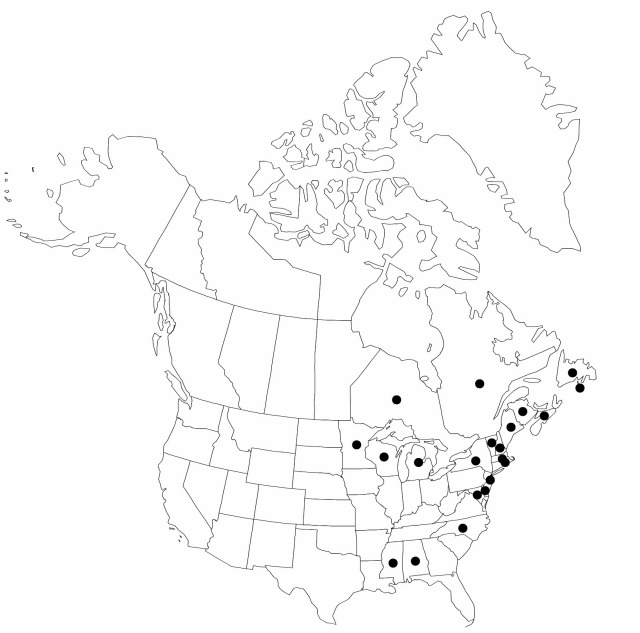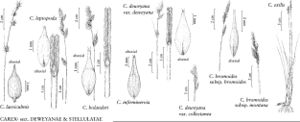Carex exilis
Amer. J. Sci. Arts 14: 351, plate Q, figs. 53, 54. 1828.
Culms 12–80 cm. Leaves 2–6 per culm; sheaths tight, inner band hyaline, 3.5–21 cm, apex concave, glabrous; ligules rounded, 0.8–1.8 × 0.6–1.6 mm; blades involute, 4–70 cm × 0.4–1.5 mm, widest leaf 0.8–1.5 mm wide. Inflorescences 0.6–4 cm; spike 1 (occasionally 1–3 smaller accessory spikes), gynecandrous with staminate portion of spike 1–3 mm wide, to 50-flowered and pistillate portion of spike 5–9.5 mm wide, to 27-flowered or plants sometimes unisexual with staminate and pistillate spikes on different plants. Pistillate scales ovate, 1.8–3.3 × 1.3–2.2 mm, apex acute. Staminate scales lanceolate to ovate, 1.7–5.5 × 1–2.2 mm, apex acute. Anthers (2–)2.2–3.6 mm. Perigynia spreading to reflexed, castaneous to dark brown, 15-veined abaxially, faintly 7-veined adaxially, lanceolate-ovate to broadly ovate, 2.6–4.7 × 1.25–2.3 mm, 1.3–2.65 times as long as wide; beak 0.5–1.7 mm, 0.2–0.65 length of body, serrulate, teeth blunt, to 0.35 mm, soft. Achenes ovate, 1.4–2.2 × 1.2–1.7 mm.
Phenology: Fruiting late spring–early summer.
Habitat: Fens, bogs
Elevation: 0–500 m
Distribution

St. Pierre and Miquelon, N.B., Nfld. and Labr. (Nfld.), N.S., Ont., Que., Ala., Del., Maine, Md., Mass., Mich., Minn., Miss., N.H., N.J., N.Y., N.C., R.I., Vt., Wis.
Discussion
Selected References
None.
